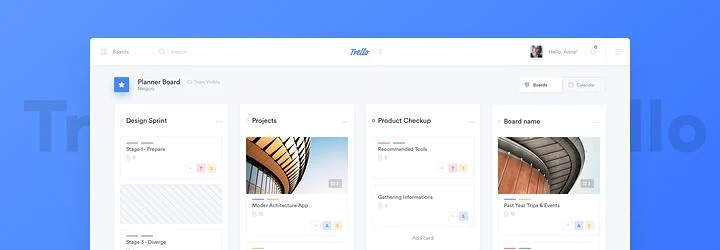Introduction
This guide is for anybody looking to learn more about how Node.js works, its pros and cons and how it can help deliver tangible business results.
We’ll begin by defining what Node.js is and give a brief history of its development, before listing some pros and cons, with examples to highlight them. There’ll also be some tips on how to host and maintain Node.js applications and how Node.js compares with other programming languages.
So, let’s get going.

What is Node.js and why does it matter?
Node.js is an open source, cross-platform runtime environment and library that is used for running web applications outside the client’s browser.
It is used for server-side programming, and primarily deployed for non-blocking, event-driven servers, such as traditional web sites and back-end API services, but was originally designed with real-time, push-based architectures in mind. Every browser has its own version of a JS engine, and node.js is built on Google Chrome’s V8 JavaScript engine. Sounds a bit complicated, right?
In simple terms, what this means is that entire sites can be run using a unified ‘stack’, which makes development and maintenance quick and easy, allowing you to focus on meeting the business goals of the project.
The fact that Node.js is open source means that it is free to use and constantly being tweaked and improved by a global community of developers.
An important thing to understand about Node.js is that it is actually neither a framework or a library - as with traditional application software -, but JavaScript a runtime environment.
A runtime environment (sometimes shortened to RTE) contains Web API’s that a developer can access to build a code, and a JavaScript engine that parses that code. This makes it lightweight, flexible and easy to deploy, all features that will help to optimize and speed up your application project.
The history of Node.js
Node.js was created in 2009 by Ryan Dahl. Previously, Dahl had criticized the limited possibilities offered by existing popular web servers and common coding methods.
At the time, servers struggled to handle high-volume concurrent connections, and codes either blocked the entire process or implied the need for multiple stacks. These were all issues that hampered the ability of businesses to build versatile products that engaged with and met high-volume user requirements.
.jpg?width=300&name=image2%20(1).jpg)
In response, Dahl created Node.js to provide developers with the power to use JavaScript for server-side scripting and unifying web application development around a single programming language.
The initial release of Node.js only supported Linux and Mac OS X operating systems. Its development and maintenance was led by Dahl at first, and later sponsored by Joyent, a software and services company.
In January 2010, a package manager for Node.js was introduced to make it easier for programmers to publish and share source code of Node.js packages and simplify installation, uninstallation and updates.
In 2011, Microsoft and Joyent came together to develop a native Windows version of Node.js, expanding the number of operating systems it could support and giving developers more options than ever.
Since then, a neutral Node.js Foundation has been formed to bring developers together in one community. The Node.js foundation was merged with the JS Foundation in 2019, to form the OpenJS Foundation. The foundations help to govern the open-source, distributed development project of Node.js.
Interesting facts
Node.js is used by big business and small enterprises alike. While the likes of Amazon, Netflix, eBay, Reddit and Paypal all use it, 43% of developers using Node.JS in 2023 do so for enterprise applications.
Some of the most common words users associate with Node.js are: fast, simple, easy, powerful and flexible. Node.js is not perfect for every project, of course, but with all of this in mind it’s easy to see why it’s so popular with start-ups and globals alike.
Node.js architecture
The mechanics of Node.js are what contributes to its popularity with developers. Whereas most alternative runtime environments utilize multi-threaded processing models, Node.js does it all in a single thread.
In multi-threaded processing setups, each server has a limited thread pool it can access. So every time a server receives a request, it pulls a thread from the pool and assigns it to that request, to take care of processing it. In this case, the processing is synchronous and sequential, which means that one operation is performed at a time.
In multiple-thread processing, a thread is picked out every time a request is made until all of the limited threads are used up. When this happens, the server has to wait for a busy thread to become free again. This can make for slow and inefficient applications, which leads to knock-on effects on anything from customer experience to lead conversions. It can particularly become a problem if your application has to deal with a high number of concurrent client requests.
Node.js, however, uses single-threaded processing. The difference between the two is as you’d imagine: single-thread architectures process every request using a single main thread, utilizing event loops to run blocking Input/Output operations in a non-blocking way. Don’t worry if some of these terms seem unfamiliar. The ‘Terms To Know’ section, below, will explain it all in more detail.
A single-thread architecture can, in theory, perform and scale much more quickly and efficiently than multiple-thread setups. This is what Ryan Dahl had in mind when he first wrote Node.js and is a big part of why it is so popular among web application developers.
Node.js glossary
Below is a list of common terms you’ll see when reading about or discussing Node.js, and their definitions.

What is JavaScript?
JavaScript is the programming language that underpins Node.js. It is a high-level and multi-paradigm language characterized by ‘curly bracket’ syntax, dynamic typing, prototype-based object orientations and first class functions.
These features mean JavaScript can convert a static webpage to an interactive one, adding features such as search boxes, embedded videos or news feed refresh tools. These are features that aim to improve user experience by encouraging intuitive engagement.
Node.js modules
Node.js features multiple ‘modules’ that are kept within individual contexts so they do not interfere with other modules or pollute the global scope of node.js. This is crucial for open source softwares.
A module in Node.js is a functionality - either simple or complex - which is organized into JavaScript files and reusable throughout the Node.js application. There are three types of module within Node.js: Core Modules, Local Modules and Third Party Modules.
Core Modules include the basic, bare-bones functionalities of Node.js. They load automatically when a node process starts and are part of Node.js’s binary distribution.
Local Modules are modules that are created within the Node.js application. They include different and additional functionalities in separate files and folders to the core functionality package. Local modules can also be packaged and distributed for use by the wider Node.js community.
A third party module is an existing code written by a third party, and can be imported into your Node.js application to expand or add different features and functions.
Microservices
A microservice is an individual, self-contained unit that works alongside others to make up a large application. Splitting an app up into multiple small parts makes it easy to maintain, independently deployable and scalable. They can be written by different teams and tested individually.
Microservices can be beneficial for developers because they allow components to be compartmentalized and managed individually, offering greater control and flexibility. Microservices allow components to be modified or updated without impacting the overall application or interrupting performance.
Microservices are not always the best option for every project. A common issue with microservices is ‘orchestration’, the challenge of integrating the services with a drive that guides the process. ‘Discovery’ can also be a problem, where microservices struggle to locate and relate to each other on a server. These issues can be solved with a more ‘monolithic’ structure, which is a single, autonomous unit.
Both approaches have their advantages and choosing which to use depends upon the scope and requirement of the individual project.
What is event-driven programming?
Event-driven programming is a feature of applications designed to respond to various forms of user engagement. It is known as a ‘programming paradigm’, whereby the flow of the program’s execution is determined by events.
In this context, events are any action made by a user, such as clicks or key presses. They can also mean messages from other threads or programs.
Event-driven programming is designed to detect actions as they occur, and processes them using establishing event-handling procedures. This provides for a more reactive and intuitive user experience and adds flexibility to applications handling concurrent requests.
Node package manager
Node package manager (or ‘npm’ for short) does a few things; firstly, it acts as an online repository for publishing open-source Node.js projects. Secondly, it is used as a command-line facility for interacting with that repository, assisting with package installation, version management and dependency management.
It is used most commonly to publish, discover, install and develop Node programs. Essentially, it helps developers to make best use of Node.js tools and packages with a useful interface.
Node.js worker threads
Worker threads is a feature within Node.js that is useful for performing heavy JavaScript tasks. The worker_threads module enables execution of JavaScript codes in parallel, making the entire process quicker and more efficient. It does this by using an existing pool of ‘workers’ to handle new and incoming tasks.
Worker threads help with CPU-intensive tasks without disturbing the main Node.js thread, offering flexibility and compartmentalization.
Event loop
The event loop is what allows Node. js to perform non-blocking I/O operations — despite the fact that JavaScript is single-threaded — by offloading operations to the system kernel whenever possible. Since most modern kernels are multi-threaded, they can handle multiple operations executing in the background.
Generally speaking, the event loop is a mechanism that waits for and dispatches events or messages in a program. In Node.js, event loops are the central control flow constructs. For example, every time a request is about to be handled, it’s put on the event loop and processed as soon as it’s ready to be processed.
Node, instead of doing it on its own, delegates the responsibility of handling the system. Because of such behaviour, Node is not actively waiting for this task to finish and can handle other requests in the meantime. The event loop makes Node.js faster and more efficient than other technologies
The Pros and Cons of Node.js

The Popularity of Node.js
JavaScript, which underpins Node.js, has been one of the most popular programming languages available for some time. While it has more commonly been used for front-end web development, it has also gained ground in different areas of application and on distinct platforms, such as Node.js.
Even though Node.js was originally written in 2009, it wasn’t widely adopted until recently. Currently, numerous successful brands have leveraged Node.js to develop both front and back-end applications, including Walmart, Netflix, Medium, LinkedIn or Groupon.
Node.js is rising in popularity for a number of reasons, which we will go through shortly. It’s also important to know that, as with every technology, there are some drawbacks which mean Node.js isn’t perfect for every project.
What can Node.js do and what kind of products can be built with Node.js?
Node.js is a versatile JavaScript runtime environment built upon event-driven programming that enables non-blocking I/O (Input/Output) capable of serving multiple concurrent events in a single thread. This makes Node.js fast, lightweight, scalable, and efficient in handling data-heavy and I/O-heavy workloads characteristic of several types of web applications.
Internet of Things
IoT (Internet of Things) is a network of devices such as sensors, beacons, actuators, and any other items embedded with electronics that enables them to send and exchange data. IoT may consist of thousands of such devices, which makes it challenging to manage requests and data streams from and between the devices.
Since 2012, Node.js has become one of the preferred solutions for enterprises and organizations seeking to develop IoT systems because it can process multiple concurrent requests and events emitted by thousands or even millions of devices on the network without seeing a decrease in speed or performance.
The avalanche of requests and data coming from IoT devices does not block Node.js servers thanks to their event-driven architecture and asynchronous processing suitable for I/O-heavy operations on the IoT network. This makes Node.js fast as an application layer between these devices and the databases that store data from them.
Real-time chats
Real-time chat is any online communication tool that enables the live transmission of text, video, or audio messages from a sender to a receiver. They are used widely across social media apps and commercial sites and, as a result, are an important part of many industries.
Node.js provides all basic functionalities for building real-time chats of any complexity. In particular, Node has a powerful Event API that facilitates the creation of “emitters”, which periodically emit named events “listened” to by event handlers. This functionality makes it easy to implement server-side events and the push notifications widely used in instant messaging and other real-time applications.
Complex single-page applications
Single-Page Applications (SPAs) are a popular approach to web development in which an entire application fits on a single page with the goal of providing a comprehensive user experience, similar to a desktop app.
These days, SPAs are widely used to create social networking apps, online drawing and text tools, and many more. The classic example of an SPA is Gmail, with its cohesive presentation and seamless updates of new incoming messages.
Node.js is a great fit for SPAs thanks to its ability to handle the asynchronous calls and data-heavy workloads characteristic of these applications. Node.js’s event loop can “delay” multiple concurrent requests from a client, which ensures smooth transitions between views and seamless data updates.
Finally, Node.js is good for SPAs because it is written in the same language (JavaScript) as many popular JavaScript frameworks (Ember, Meteor, React, Angular) used in building SPAs.
Since both Node.js and browsers use JavaScript, there is less context switching between them, and developers can use the same data and language structures and modular approaches both on the the server side application and the client side. This results in faster development and better maintainability of your SPAs.
For this reason, Node.js is popular with several social sites, like LinkedIn and Medium.
Real-time collaboration tools
Real-time collaboration applications offer a variety of software solutions for co-browsing, project management, video and audio conferencing, application sharing, collaborative editing of documents, and more. Popular and successful examples include Slack, Trello and Google Docs.

As in the case of the real-time chats, Node’s asynchronous and event-based architecture is a great fit for collaboration apps. In these applications, many events and requests occur concurrently. For example, several users can edit the same paragraph, comment, post messages, and attach media from different devices. Changes to one piece of content might be applied only after a cascade of events, where each step depends on the previous one.
By emitting push notifications to the client, Node.js will also instantly update the collaboration environment so that all users have a single and coherent representation of the application. This is precisely the reason why the team of the project management application Trello uses the Node.js stack. The engineering team of Trello decided that Node.js would be great to instantly propagate multiple updates and hold a lot of open connections, thanks to its event-driven and non-blocking architecture.
Streaming apps
Application streaming allows parts of the application to be downloadable on demand without overloading the server and the local computer. Initially, only certain parts of the application needed for bootstrap are downloaded. The remainder can be downloaded in the background if necessary. When the application is completely downloaded, it can function without any network connection at all.
Node.js is excellent for the development of streaming applications thanks to its native Stream API. It has an interface of readable and writable streams that can be processed and monitored very efficiently. Stream instances are basically Unix pipes that allow parts of the app’s executable code to be transmitted to the local machine, keeping a connection open for new components to download on demand.
As a bonus, streams do not require caching and temporary data – just an open connection to stream application data from one place to another.
Microservices architecture
In recent years, microservices architecture has become extremely popular with many major applications such as Netflix, Facebook, Amazon, and eBay, which have evolved from monolithic applications to a suite of microservices.
Node.js is an excellent solution for developing microservices and creating easy-to-use APIs to connect them. In particular, the Node.js repository features Express and Koa frameworks, which make it easy to mount several server instances for each microservice and design routing addresses for them.
These benefits have been successfully leveraged by PayPal, which has used Node.js to power its microservices architecture since 2013.
Why Should you use Node.js? 5 advantages
Some of the benefits of Node.js are as follows:
1. Easy to Learn
Javascript is one of the most popular programming languages for front-end development, and nearly every front-end developer is familiar with this universal language.
Therefore, it is much easier for developers to switch to using Node.js at the back-end. It requires less effort and less time to learn and work with, even for a junior Javascript programmer.
2. Freedom in app development
While Ruby on Rails is a framework that imposes rules and guidelines for developing software in a particular way, Node.js offers more space and freedom for doing things your own way (see below for a more in-depth comparison between Node and Ruby).
Node.js is completely un-opinionated, meaning you can build everything from scratch and tailor every last detail. It can execute basic tasks, but gives you only the bare minimum from a fresh install, allowing you to add features from there with less restrictions.
3. Fullstack JS
Before Node.js, the JavaScript code was only used for client-side development. It was necessary to use a different server-side programming language. In practice, you had to hire separate development teams for backend and frontend.
With Node.js growing in popularity, fullstack JavaScript became a reality. Nowadays it is possible to write both the front-end and back-end of web applications in Javascript, making app deployment much easier and more efficient.
4. Active community
The Node.js developers community is an active and vibrant group of developers who contribute to constant improvement of Node.js. Thanks to the cooperation of JavaScript programmers and their input to the community you get access to a ton of ready solutions, codes in Github and many more possibilities.
Even though it is still at a relatively early stage of development, the community is evolving dynamically and its members go the extra mile to provide others with best-in-class, reliable solutions.
5. Simultaneous Request Handling
Node.js provides a non-blocking I/O system that lets you process numerous requests concurrently. Incoming requests are queued up and executed sequentially in rapid time. In effect, your app will take up much less system RAM, achieve high scalability levels and will perform faster as a result.
Disadvantages of Node.js
Even with all of the benefits listed above, there are some ‘cons’ that come with Node.js that mean it might not be the right tool for all application development projects. Here’s a few of the disadvantages of Node.js.
1. Unstable API
One of the biggest disadvantages of Node.js is that it lacks consistency. Node.js’s API changes frequently, and the changes are often backward-incompatible.
When this happens, programmers are forced to make changes to the existing code base to make it compatible with the latest version of the Node.js API. Obviously this can create extra work that distracts from the goal of improving your application.
2. More development time
The fact that Node.js is un-opinionated can also be seen as a drawback by some developers. Ruby on Rails provides you with a lot of directions from a fresh install and guides you into their way of doing things, but with Node.js you basically need to write everything from scratch.
This can offer flexibility, but it can also result in a decrease in productivity, slowing your work down. However, if you cooperate with an experienced team of programmers who have internally developed good processes for developing and maintaining code, you won’t have to worry about this.
3. Unsuitable for heavy-computing apps
Node.js doesn’t support multi-threaded programming yet. It is able to serve way more complicated applications than Ruby, but it’s not suitable for performing long-running calculations. Heavy computations block the incoming requests, which can lead to decrease of performance. While Node.js is perfect for complex apps, in the case of software which requires some heavy-computing it might perform less effectively.
4. Immaturity of tools
Even though the core of Node.js is stable, many packages in the Node package manager (npm) registry are still of poor quality or have not been properly documented. As it is mostly an open source ecosystem, some tools have not been supervised and they might lack quality, failing to meet coding standards. The npm’s structure makes it harder to spot reliable packages. Therefore, you might need more experienced developers who can find tools that can be trusted.
Examples of Node.js products
While we’ve already listed a number of brief examples of companies that use Node.js, here are some more detailed case studies to help you see the real-world applications and business uses of this technology.
1. Netflix
Netflix is the world’s leading provider of streaming media and video-on-demand. It’s a data-driven platform that uses a massive amount of A/B testing to build a rich experience for its 195+ million subscribers worldwide.
Great numbers of unique packages every push cycle create the challenge of conditional dependencies and app scalability. That’s why the company decided to leverage the lightweight and fast Node.js. One of the most important results of this was a 70-percent reduction in startup time.
You can learn more about their work with Node.js from this presentation:
2. LinkedIn
LinkedIn, the world’s biggest business and employment-oriented social networking service, also trusted Node.js when they moved their mobile app backend from Ruby on Rails to Node.js.
Even though at that time it was still a very immature runtime environment, it proved to be a smart move. The new app was 2-10 times faster than its predecessor, and also extremely lightweight. On top of that, development time was quick.
“It was fast by all standards,” LinkedIn’s mobile development lead Kiran Prasad told VentureBeat. “I’ve worked at startups and big companies like Yahoo, and yeah, it was fast.”

3. NASA
Yes, that’s right. NASA uses Node.js too.
The technology is of much greater importance than in other applications because it saves lives, keeping astronauts safe during their dangerous space expeditions.
After an accident in which one of the astronauts nearly died because of ineffective data hosted in many locations, NASA faced the challenge of moving the data related to the EVA spacesuits to one cloud database in order to reduce access times. The new system based on Node.js decreased the number of steps in the process from 28 to 7.
Check out this report from Node.js to find out how NASA approached this challenge and how the technology helped them overcome it.
4. Trello
Trello is a project management app that we embrace in our daily work at Netguru. The server side of Trello was built in Node.js. An event-driven, non-blocking server was a good solution for an instant propagation of updates, which required holding a lot of open connections.
Node.js also became useful when the company was prototyping a tool for a single-page app. It was a quick way for them to get started and make sure that everything was going in the right direction.

5. Walmart
Walmart is the world’s largest retailer, and is making headway into the online retail market. The giant has jumped on the bandwagon of working with Node.js – a relatively new and very trendy technology despite the risk that was involved in such a move.
The company re-engineered the mobile app to provide sophisticated features on the client side. Walmart especially appreciated Node.js’s asynchronous I/O and its single-threaded event loop models to handle multiple concurrent requests.
To learn more about Walmart’s successful transition with Node.js, watch this ‘lessons learned’ presentation.
How to choose a hosting service for Node.js
Once you’ve decided to use Node.js for your application development project, you need to choose a hosting service.
A hosting service is a service that runs servers, allowing organizations and individuals to create and serve content to wider networks, like the internet. Every website you’ve ever accessed is hosted on a server, so they’re a fundamental part of every application.
Below is a guide to 7 different Node.js hosting services. Some of them are free, some paid, and some offer a mix of basic and premium packages. Each one has slightly different features, so we’ve listed the pros and cons so you can decide which one is right for your project.
1. Amazon Web Services
Amazon Web Services (AWS) allows you to deploy a high-availability Node.js web application using the AWS Elastic Beanstalk service. This is a container system that makes it extremely easy to push packaged applications to AWS as Platform as a Service (PaaS).
You have full control over the server on which your application is run, and you can also run multiple applications on the server, which means lower running costs.
- Pros: Great pricing, plus ample support in the form of forums, plans and documentation.
- Cons: Quite a steep learning curve when it comes to AWS, especially for those who have never used it before, and even more so for those who have never been responsible for the administration of their own server before.
2. Google Cloud Platform
Google Cloud Platform (GCP) is a cloud-based provider mostly focused on providing great container support, analytics, big data, machine learning solutions, and Google Kubernetes Engine.
Google is heavily invested in Docker and is the creator of Kubernetes (a popular system used for automating app deployment, scalability and management), so the integration with GCP is best-in-class.
Also, it’s Google. They know how to do analytics, data, and machine learning well. If the scope or budget of your project is lower, there’s also a free tier of GCP available.
- Pros: Google Kubernetes Engine is the easiest way to get into Kubernetes. Lots of tools for big data. Great machine learning solutions ready to be used.
- Cons: As GCP is the youngest of the three big platforms, it can lag behind with accessibility zones and the number of data centers, but with Google’s resources, it’s unlikely to remain that way.
3. Heroku
Initially only supporting Ruby on Rails, Heroku has since added support for a wide range of languages and environments including Node.js. Heroku offers seamless integration with a host of third-party services (such as SendGrid and Redis) and supports deployment across multiple regions.
- Pros: Heroku offers a free tier and is very easy to get started with (even for novice developers). There’s great support documentation freely available, and an extensive list of plugins and services that can be added instantly.
- Cons: Once you leave the free tier, Heroku does start getting pretty expensive pretty quickly. Also, while starting with Heroku is fast, larger applications tend to lead to slower deployments.
4. Microsoft Azure
Microsoft Azure is Microsoft’s cloud-based platform that lets developers rapidly build, deploy and manage powerful websites and web apps. This is a reliable platform with great flexibility and high-availability across multiple regions.
With support for both Windows and Linux machines, you are able to monitor all of your Node.js applications hosted on Azure in real-time, with automatic scalability supported.
- Pros: A good free plan which allows you to host up to 10 apps on each data centre. It’s also super-easy to scale your Node.js app up or down in Azure or simply enable autoscaling to allow Azure to scale in accordance with traffic.
- Cons: Deployments can be slow, so if you need a quick turnaround time on your project, this might not be the hosting service for you.
5. RedHat OpenShift Online
A firm favourite amongst first-time developers, RedHat Openshift Online, offers Node.js hosting absolutely free forever – that’s no free-trial period, just free. The Platform-as-a-Service option enables no-fuss cloud hosting, allowing you to focus entirely on improving your applications.
- Pros: OpenShift Online is another platform which supports automatic scaling, so if your app receives an unexpected spike in traffic, you’re covered. Multiple region support and free access to built-in private databases.
- Cons: Although the hosting is free, you are limited to one project.
6. ZEIT Now
A zero-config hosting platform from the creators of the Next.js JavaScript framework. It supports monorepos out of the box and deployments take seconds to complete. It also offers great pricing and a generous free tier.
ZEIT Now can even take care of CI/CD (continuous integration, continuous delivery) and allow you to go serverless with ease. Under the hood, Now offers AWS and Azure-backed services. A great solution for beginners and professionals alike.
- Pros: A great choice for APIs that assist single page applications. Very easy to use, set up, and get CI/CD in a matter of minutes. The free tier is very generous.
- Cons: Now’s focus is on stateless and static applications. They do not offer any databases or persistent storage solutions. Instead, you will need to rely on cloud-based solutions, such as MongoDB Atlas, AWS CosmosDB, Google Cloud SQL, or similar.
7. DigitalOcean
DigitalOcean is a VPS provider that offers some additional features and products targeted at Node.js apps. During their simple setup process, you can use a one-click Node.js setup process, which will install node, and prepare everything for you on the newly created droplet.
Additionally, DigitalOcean Spaces is a great way to store files. They also provide a Kubernetes cluster, which can be used for more involved architecture setups.
- Pros: Prices – VPS’s are generally cheaper to set up. The user interface is simple and DigitalOcean provides many one-click images to start working faster.
- Cons: Requires more knowledge and involvement than cloud providers.
Tips and Reminders for Node.js maintenance
Once you’ve chosen a hosting service and got your project underway, you need to decide on a maintenance strategy.
Improper maintenance of an application can result in issues related to stability or flexibility. If the code is not well-written or if developers use outdated tools, the performance can suffer, and users might experience more bugs and app crashes.
In addition, poor-quality code can hamper the app’s scaling capacity and the further development of the application. In the worst case scenario, it might become impossible to introduce new features without rewriting the codebase from scratch. In business terms, you will have to put more resources into technology and prepare for a much longer development process.
So application maintenance is of paramount importance, and following best maintenance practices can save money, speed-up development and offer continuous improvement for your app.
Node.js requires a slightly different approach and poses different challenges when it comes to maintenance. Learning where you can find the biggest problems and knowing the right solutions is crucial to your app’s success.

Challenges
There are four main challenges that come with Node.js maintenance, so we’ll go through those first before providing some tips on how to overcome them.
1. Extensive stack
Node.js doesn’t provide any specific convention for developing the application. Frameworks that use Node.js are mostly unopinionated, meaning that they don’t give you any specific guidelines for the way code should be written. That’s why each application requires an individual approach and, as a result, more experienced programmers who have worked out good processes for developing and maintaining code internally.
2. Technical debt
Many problems with Node.js stem from the lack of good practices. The open-source community is very active and offers plenty of ways of building applications.
Having too many options however, could be a problem for inexperienced developers and could lead to application structure inconsistency.
The ecosystem is still relatively immature. Implementing well tested design patterns borrowed from other more traditional environments like Java is crucial for later code maintenance.
3. Scalability challenges
Node.js is a single-threaded process, which makes scaling a little bit more complicated. Developing more complex applications with CPU/MEM-heavy computations might require dividing it into smaller microservices that handle different operations.
When architecting a performant and scalable Node.js application, keep in mind it should be relatively small and stateless. Recent years have brought development in the area in the form of different architectural approaches such as the aforementioned microservices or serverless as well as Node.js threading support.
4. Poor documentation
Documentation is crucial to every IT project. It tells developers what the main components are, how they relate to each other, and what the main purpose of the application is.
It provides explanations as to why certain solutions, especially the less obvious ones, were applied. Poor documentation will very likely extend the development time, and make the whole process more difficult.
It can expose the application to problems with performance and inhibit the implementation of new features.
How to deal with Node.js maintenance problems
Code review: The first thing you need to do when you notice that something is not working properly in the application is to run a code review, regardless of the stack you use.
Code review will tell you a lot about the quality of the code and the stack, and about the application in general. It should always be the first step in the process of discovering problems and potential solutions.
Having conducted a successful code review, you can narrow down the real problem and see whether it lies in the performance, scalability, architecture, or flexibility.
When fixing the issues with your application, you should also specify the expected outcome and your resources: time and money.
Once you have a clear idea of what you want to achieve, and how much you can spend on it, it will be much easier for your team to choose the optimal solution.
Use microservices: If the actual problem lies in the monolithic structure of your app, you should extract microservices, so that they can work separately. Each mini-application should serve its own purpose, for example: API, database communication, fetching external datas, etc.
This will significantly streamline scalability, because you’ll be able to move services around different machines. If one of them needs extra computing power (e.g. video transcoding), you can delegate this as a service to a more powerful machine.
Microservices also help dealing with Conway's law, which (paraphrased) states that "any piece of software reflects the organizational structure which produced it". Having multiple teams working on a monolithic application might be problematic. Divide your app into microservices and let your teams work in isolated, dedicated environments.
This improves flexibility and is especially useful when you hire a new team to implement a change in one microservice. Your development team doesn’t need to go over the whole structure, just the part that needs an update.
As we mentioned earlier on, there are some drawbacks with Microservices, but they can be extremely useful in the maintenance of your Node.js app.
Improve code quality: If the application works well, but the overall code quality seems to be low or inconsistent, you should first introduce some conventions. Clean up the file structure by dividing it into logical units. It’s good to implement static code analysis tools (e.g. Codebeat) and use a type system (Typescript, Flow).
Make sure that the deployment process is driven by a properly configured Continuous Integration. Put some linters into the pipeline to make sure you don’t push poor or inconsistent code to the production.
Make sure you include code refactoring into your daily development process. Performing code optimisation on a regular basis will prevent growth of technical debt and will ensure great new ideas being implemented across the entire codebase.
It improves velocity development in the long term and makes developers happier and more productive. This also makes the project more readable for newer team members.
Test before new feature implementation: If you need to implement or rewrite some functionalities, make sure your app’s behaviour is well tested before you start your work. All crucial parts of the application should be properly tested in advance.
Imagine that you need to rewrite a part of user management logic in your application. It will be much easier to implement changes properly if you are certain that current functionality has been fully tested. In this case, if something stops working after your changes, you’ll know about it immediately.
Improve documentation: Good documentation for your application is crucial for the efficient development and good communication with the team. That’s why you should ensure that the documentation is always updated and covers all the general information about the app and its key facts.
Good documentation needs to be easily understood and should contain accurate information that helps users get the most out of your software. It should be easily accessible to anyone in the team, and it should explain procedures and problems. If your documentation lacks some important information make sure you update it as soon as possible.
Update the stack: Upgrading Node.js to the latest version is straightforward. It can be updated by dev-ops, unless something is not working well – then you might need the help of developers. Keeping the Node.js version up-to-date can boost your app’s performance (but doesn’t necessarily have to).
It also gives the developers the ability to work with modern native solutions, such as async/await and other features, which can make the development process faster. There will be no need to set up transpilers, you will use fewer third-party libraries, and have a more bulletproof stack.
That said, updating the version of Node.js you’re working with isn’t the main concern here. It rarely generates backward compatibility problems. Most issues result from using outdated open-source modules.
The application can use libraries that are not supported or maintained anymore, which, in Node.js world, will accrue technological debt pretty fast.
If you have found any outdated libraries, first of all check if they’re still actively maintained. If so, prepare a plan for an update. You have to be sure that it won’t break anything.
Check whether the app has been tested through and through – a test coverage tool will be helpful here. But what if the core library is not maintained at all? Look for alternatives, and if there aren't any, make sure that your tests have you covered, and you'll be the first one to know if something stops working.
Dig into the roots: If your app isn’t performing well, check the roots of the problem. Is it an architecture problem or is the machine too weak to handle it?
Alternatively, could the problem lie within the code? What you do will depend on the results of this investigation – implementing autoscaling, architecture changes, or rewriting some parts of the code.
A single universal cure doesn’t exist. But there’s one thing you should always have in your locker: a monitoring service such as NewRelic or Instana. Nothing will help you better in getting to the heart of the problem than logging the application’s behaviour.
Node.js is a great fit for many projects, but as with any technology, it can cause problems if it isn’t properly maintained. When you encounter a problem, review the code, verify the documentation, and discuss the application with an experienced team.
The vast majority of issues with Node.js applications can be detected with a code review and solved with a targeted approach.
Analyzing Node.js vs other programming technologies
Of course, there are lots of different technologies out there to choose from, and each one will bring something different to your project or application. To help you decide, we’ve put together a comparison of Node.js and some of the main alternatives available.
Node.js vs Java
Node.js is perfect for web apps, mobile apps, real-time applications (instant messaging, live chat), online gaming apps, e-commerce transaction software, and much more.
It's also a good choice if you're dealing with microservice architecture, which can lay the foundation for advanced systems – bear in mind that apps like Netflix or Uber were built using Node.js.
On the other hand, Java is great for applications that are CPU intensive or CPU-bound. The same goes for applications with a vast code base – since Java provides strongly typed sources, refactoring it and bug fixing will be more straightforward during its maintenance.
If your application uses a RDBMS (Relational Database Management System), Java will be a great pick – it includes tools that provide multi-database support for object-relational mapping to make configuration easier when you switch to another database.
It’s possible to avoid choosing between these two by developing an application in Java and linking to it with JavaScript through an engine like Rhinorun. However, in a real-world scenario, using Node.js for your web application makes more sense.
It's faster and more scalable than Java, meaning quick deployment and greater potential. It also offers top performance.
The growth of Node.js among the industry giants indicates its versatility too. Node.js is far more than an application framework – it's also used in corporate data software, rapid application modernisation projects, and IoT solutions.
Node.js vs Ruby on Rails
Node.js and Ruby on Rails (RoR) are two popular server-side solutions for web application development. Despite the fact that both environments can manage apps of any complexity they are built around different concepts and architectures.
Node.js is more suitable for dynamic applications with multiple server requests, and frequent shuffling of data between client and server. These are instant messaging apps like chats and collaborative apps (drawing, video conferencing) collectively referred to as RTAs (Real-Time Applications).
Event-based Node.js architecture is perfect in handling heavy I/O operations, server requests and data flow. For this reason, Node.js is also the preferred choice for Single Page Applications (SPAs) that involve heavy client-side processing and rendering.
Ruby on Rails, on the other hand, performs better than Node.js in CPU-intensive applications. Node.js is a single-threaded environment that was not designed for CPU intensive operations with graphics, images, and data. Making computations on vast arrays of data may simply block all incoming requests rendering the main advantage of Node.js useless.
If you want to build a CPU-heavy application, Rails is definitely a better option. Rails is also better for speed-critical projects.with a number of modules and generators ready to use out of the box. With just a few commands, you can have a fully functional prototype that may be amended with additional features later.
Node.js repositories provide generator scripts to speed up the development, but fast prototyping is the essence of Ruby on Rails.
Node.js vs Python
The considerations here are largely the same as with Node vs Ruby on Rails.
Python is a high-level, interpreted, object-oriented programming language with a focus on readability and productivity. Founded in 1991, it supports multiple programming paradigms, which makes it a great choice for a variety of business tasks. As such, it provides ease of use and rapid development, with a rich standard library and ecosystem.
This makes Python ideal for CPU-intensive applications, which we’ve already established aren’t Node.js’s strong suit. Python also holds the edge on time-critical development and deployment options. With its rich standard library and modules available out of the box, you don’t need to search for many utility modules and packages for your application.
Instead, you can immediately proceed with the design of a fully functional prototype, which could be supplemented with other features later. Python’s simple and concise syntax makes writing code very fast too.
However, when performance and scalability of web applications are of concern, Node.js outperforms Python; it’s lightweight and fast.
In addition, Node’s power in handling heavy I/O operations and shuffling of data between the front end and the back end makes it the better choice for Single Page Applications and Real Time Applications.
Node.js vs PHP
PHP, a scripting language created by Rasmus Lerdorf in 1994, was one of the top languages of the Web 1.0 era. Content Management Systems (like Wordpress or Drupal) are the best manifestation of PHP’s early success.
Node.js support of server-side events and WebSockets makes it easy to implement pub-sub (publish-subscribe) architectures used in RTAs and quickly update the view on the user side of the app. The same features make Node.js suitable for applications that process data from IoT (Internet of Things) and Single Page Applications (SPAs) that involve highly flexible, dynamic and heavy client-side functionality.
With Node.js, it’s also easier to implement web services in which the server-side provides the connection between the client and a database and where the speed of operations and asynchronous processing is of great importance.
PHP is a good choice for a standardised solution such as a blog, news site, landing page or web portal. With such CMS (Content Management Systems) as WordPress written in PHP, you can create stable and customisable blogs without too much coding.
If you need more customisation, WordPress provides a well-documented API to change your application’s structure, presentation, plugins, etc.
So, when choosing between Node.js and PHP, you should consider the requirements of the project. If you’re looking for a standardised solution with extensive hosting support, you should consider using PHP. On the other hand, Node.js is a better option for RTAs (Real-time Applications) such as chats, collaboration apps and SPAs (Single-page Applications).
Node.js vs ASP.NET
The new ASP.NET core is an open source successor of the old closed and Windows-related ASP.NET. While ASP.NET uses C# as its primary language, Node.js is based on JavaScript.
C# offers a strict type system and is more potent than JavaScript, which relies on Facebook’s Flow static type checker or Microsoft TypeScript. It’s growing more efficient and expressive with every generation - or version - so it does have its advantages.
In general, Node.js offers more flexibility in tailoring the code for the solution because it allows developers to write code with a multitude of small components, rather than a vast number of broad parameters. Developers also benefit from native and third-party libraries with pre-existing modules that can speed up deployment and offer extra features.
ASP.NET includes many conventions that help developers make their code readable and concise. However, diverting from these conventions means manual configuration, which isn’t really hard, but might require more work, so keep this in mind if your project timeline is tight or your resources short.
If you want to take advantage of a dynamic ecosystem with ready-made elements covering many different use cases, Node.js is a safe bet, especially for microservices, web apps, real-time apps (instant messaging, live chat), and e-commerce transaction software.
However, developers who want to enjoy the benefits of C# can go with ASP.NET which also includes a sizable collection of elements for building quality applications efficiently. With its open-source model, sizable community and many free tools, ASP.NET will also be a good choice for small applications and MVPs.
Resources for Node.js
We hope this guide to Node.js has been as comprehensive as possible. However, there is a multitude of resources out there for further reading, which we’ve compiled here:












